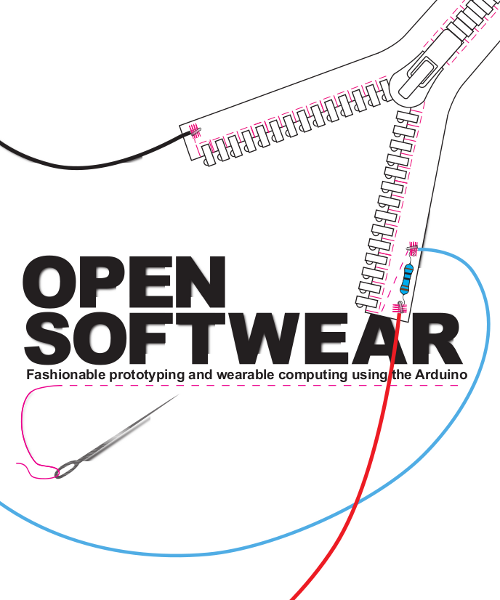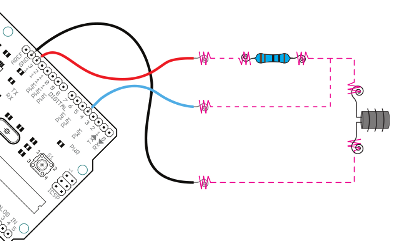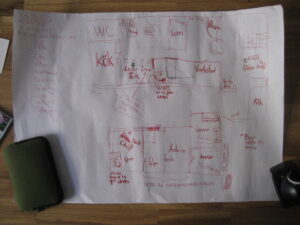HACKERS HELPING HACKERS
– July 26th, 2009
This post is not about Arduino (for a change).
Forskningsavdelningen (Swe. “The Research Department”), the hacker collective in Malmö, Sweden participated in the summer festival from the city area of Möllevången (Swe. “the windmill meadow”). This annual festival grows as an alternative to the official events arranged by the council. It is a community-driven activity where the different associations in the area co-create a friendly and open atmosphere. This year, among the traditional concerts, carnival parade and food-stands, the Research Department launched a project to help out other hacker communities in the world.
Press releaseLocal hacker group launches jewellery-making project to support third-world wireless sharing projectThe vibrant Möllevången neighborhood will again be electrified with two intense days of events and happenings. The Research Department will join this effort, hosting open sessions both days.One of these workshops, hosted by Forskningsavdelningen, is about re-using found electronic parts, either building new things, or remaking them into jewellery. Yes, ear-rings and brooches, made out of the innards of home electronics. The maker pays for the materials, and all these proceeds are sent on to a similar group in a developing country.The beneficiary of the donation will be the Jalalabad FabLab in Afghanistan. Visitors get to build and wear cool ear-rings, or a brooch, and at the same time, wireless hackers in Afghanistan get support for their community projects. Currently, the Jalalabad FabLab is engaged in the FabFi project, which creatively and cheaply shares Net connections wirelessly. The FabLab recently built and installed FabFi networks in a school, hospital, university, and a non-governmental organization in Jalalabad.Read moreForskningsavdelningen’s English-language website is http://forskningsavd.se/The website of Jalalabad FabLab in Afghanistan is http://fablab.af/ which lets you find their blog http://blog.fablab.af/ The FabFi project can be found athttp://wiki.fablab.af/index.php/Fab-Fi
If you want us to support similar activities around your hood, let us know, there is not much we can do but using our blog to make your voice heard.
LET ARDUINO PLAY CONTEST – FROM BICOGEEK
– July 23rd, 2009
Arduino distributor Bricogeek is launching an Arduino contest, deadline is August 25th, check here for the rules.
For the first time at BricoGeek.com, we organize a contest which we hope you enjoy.All you need is making a game with and Arduino board. You can use any version of the boards available but it must be playable so user can interact with your project.You can make for example a simple Simon game or even a world domination multiplayer game with graphic LCD with sounds, why not! Just let your imagination flow and do it. The jury will take care of presentation, originality,documentation and execution of your project. Don’t forgot to grab a video demonstration, of course!! You can submit your project, one per person, before the deadline show on the right of this page, so be quick! once time limit is reached, our jury will inspect all the projects submitted and device the tree who wins.
ARDUINO IN SPACE
– July 21st, 2009
Jim McGuire of the Stensat Group sent this report on what might be the most exteme environment that an Arduino’s been deployed in yet:
“In addition to the primary ISS construction mission, STS-127 is carrying two 19-inch spherical satellites scheduled for deployment on Mission Day 16. The two spheres, Castor and Pollux [http://eludium.stensat.org.nyud.net/ANDE/Main.html], are part of the Atmospheric Neutral Density Experiment (ANDE) that studies atmospheric perturbations in the LEO environment. Castor [http://eludium.stensat.org.nyud.net/ANDE/Castor.html] contains an ARM processor, while Pollux is running an Atmel ATMega CPU. Pollux [http://eludium.stensat.org.nyud.net/ANDE/Pollux.html] also contains student payloads developed with Arduino on Atmel AVRs. Both satellites transmit telemetry using the FX.25 FEC format [http://www.stensat.org.nyud.net/Docs/Docs.htm] developed by the Stensat guys [http://www.stensat.org.nyud.net/satellites.htm]. Many components are commercial-grade, purchased from Digikey. This is the second ANDE mission, following the successful deployment of MAA and FCal [http://www.usna.edu.nyud.net/Users/aero/bruninga/fcal.html] on STS-116 (both also flying commercial components.)”
Thanks Jim, for the report!
OPEN SOFTWEAR (BETA)
– July 18th, 2009
Open Softwear is the latest project at 1scale1. It is a free book (CC-NC-SA-2.5) introducing basic concepts about microcontroller programming throughArduino, and using it in when crafting interactive garments. The softwear book project is open and looks for collaborators to help with proofreading, adding new examples, translating it to other languages, or photographing your own projects for the printed version to come.
The 104 pages long document was made by T. Olsson, D. Gaetano, J. Odhner and S. Wiklund. It contains tones of illustrations, an introduction to programming, help in the use of conductive materials, and explanations about basic electronic components. It is perfect for beginners and fashion-oriented technologists. It was designed for people using the inexpensive Arduino USB board, but from here it should be possible to jump into using other systems like Arduino Lilypad.
ARDUINO NANO 3.0 NOW AVAILABLE FOR PRE-ORDER (UPGRADED AND CHEAPER)
– July 13th, 2009
We’re happy to announce that a new and improved version of the Arduino Nanois now available for pre-order. The Nano is an all-in-one Arduino board perfect for use with a breadboard; just connect a mini USB cable. The Arduino Nano 3.0 includes the ATmega328 microcontroller, which provides twice the memory of the previous ATmega168. The new board is only $35 (down from $50). If you pre-order from the manufacturer (Gravitech), the cost drops to only $30. Orders will ship on July 27th.
Other changes include: the power LED has moved to the top of the Nano, the pin labels have been rearranged for easier use, and the PCB has switched from a four-layer to a two-layer board. This last change means that the Eagle files for the Arduino Nano will now open with the freeware version of Eagle, making it easier to understand how the board is assembled and to create variations of it.
MALMÖ HACKNIGHT JULY 11TH
– July 10th, 2009
Tomorrow night I will be participating at Malmö’s HackNight arranged by the so-called The Research Department (Forskningsavdelningen in Swedish). There will be a bunch of interesting activities going on in the field of hacking. The night will open at 8pm CET at Utkanten, the punk space where the researchers meet, and will go on until 5AM. If you happen to be in the area, you should consider passing by … the entrance is free as in free beer.
Here a map of activities as for today, I am sure some more things will pop-up during the development of the night. I will be preparing my Arduino demo for Campus Party in Valencia using a TV and a custom-made shield. Sebastian fromwire.less.dk will come and talk about ReBike, the solar bike sharing the net. D. Sjunnesson will be making the Full-Body Arduino workshop he presented atReboot.dk two weeks ago. Kugg, one of The Research Deparment founders, will show his Arduino controlled phone-phreaking box. Also some guys from thePirate Party promised to show up and the local copyleft comic author Mattias Elftorp will hold a speech about Cyberpunk.
Check the program here. See directions here. The official flyer here. Big kuddos to Olleolleolle and Kugg (and all the others) for putting the program together.
TEAM TWIIZERS * R * E * S * P * E * C * T *
– July 10th, 2009
Team Twiizers just published this amazing video on Youtube where they showed how to hack a Nintendo DSi game with Arduino to inject their own logotype. Looking forward to see any documentation about this!
RESULTS ON 2009 ARDUINO CONTEST BY LIBELIUM
– June 1st, 2009
This year I have participated as guest judge in the Arduino contest arranged byLibelium, one of our European distributors and manufacturer of a whole bunch of interesting shields. There are three winners of Arduino-compatible goodies including GPRS, GPS, SD modules and Solar panel kits.
(c) 2009 by the author, video for Libelium’s 2009 Arduino Contest Winner
This year’s winners are Francisco Reinoso (1st), Joe Cochran (2nd), and Carlos Tricas (3rd). We have chosen them for their novelty, ease of replication, and level of documentation.
Francisco presents an interesting project where an Arduino 2009 is used to wireless-ly interface a centronics printer. Personally I can imagine a lot of people rescuing their old printing gear thanks to that hack. Joe introduces his Sketchduino, that will for sure be a hit in exhibitions and shows in the coming months. Finally Carlos has made a very simple hack using a fan, an ultrasound sensor, and PD to make a table-sized music instrument.
You can download the full documentation of the projects, as well as see the movies here.
ARDUINO ON THE BBC
– May 29th, 2009
MASSIMO’S BOOK ON THE IPHONE
– May 6th, 2009
Getting Started with Arduino, by Massimo Banzi as published by O’Reilly is now available for both iPhone and Kindle (DRM-free). Learn now about physical computing wherever you are and save the world some trees at once. Read more about it on Make’s Blog.
















0 comentarios:
Publicar un comentario